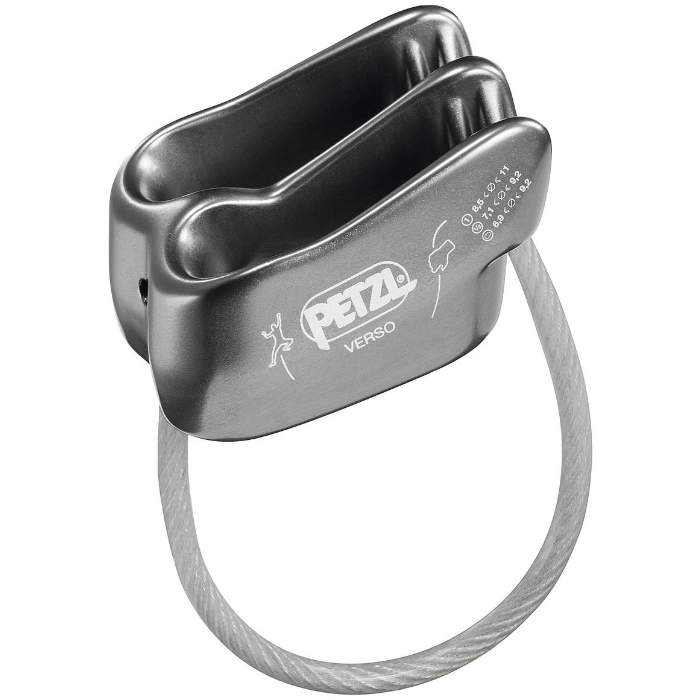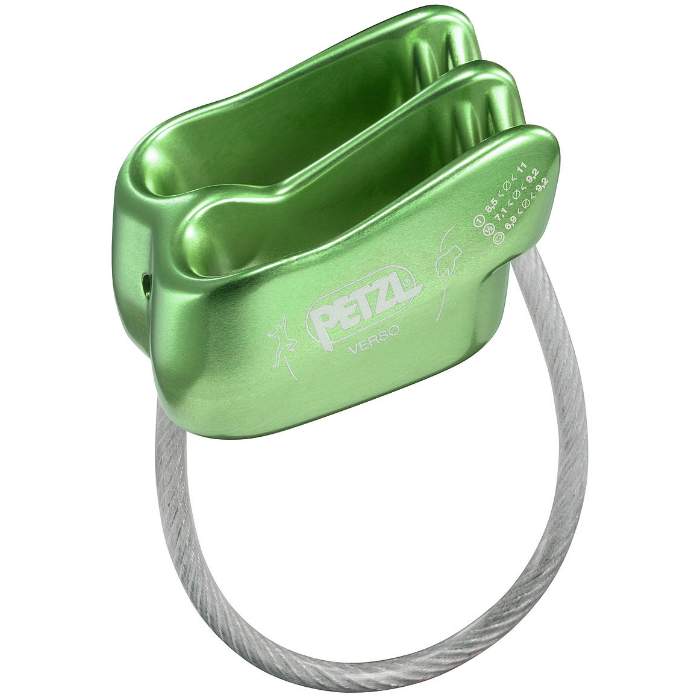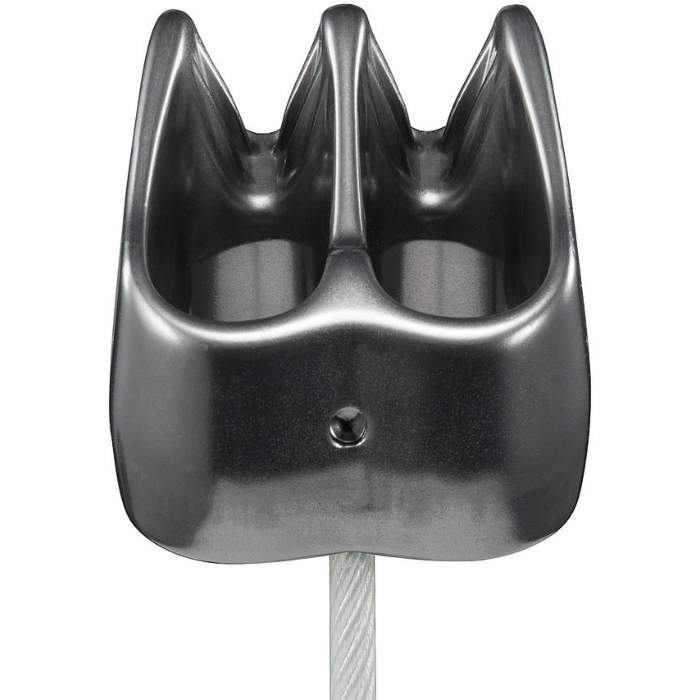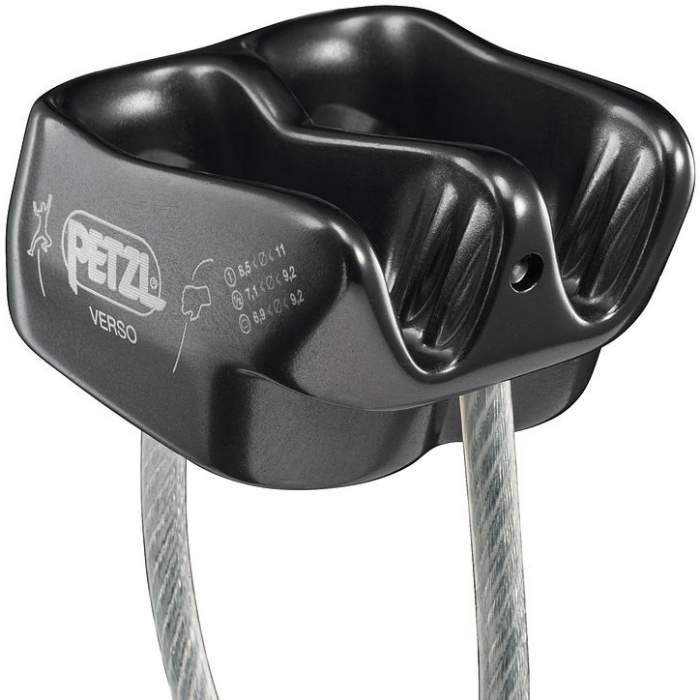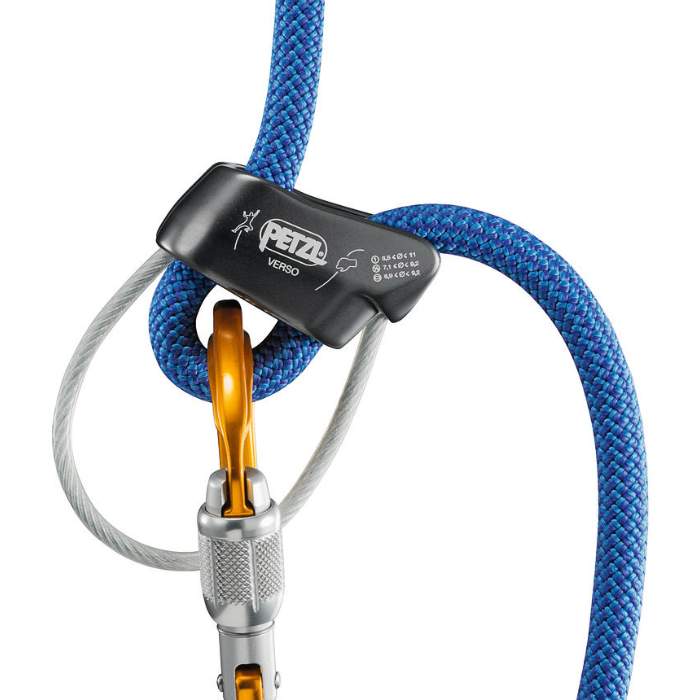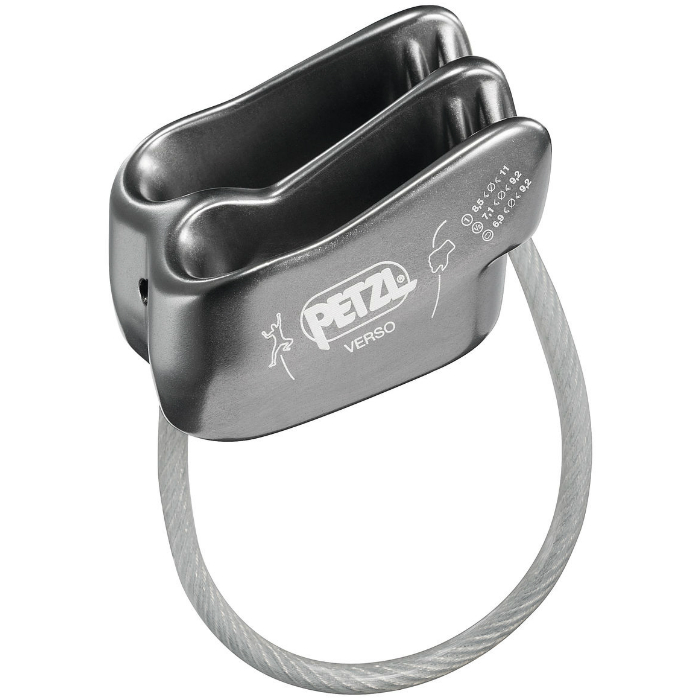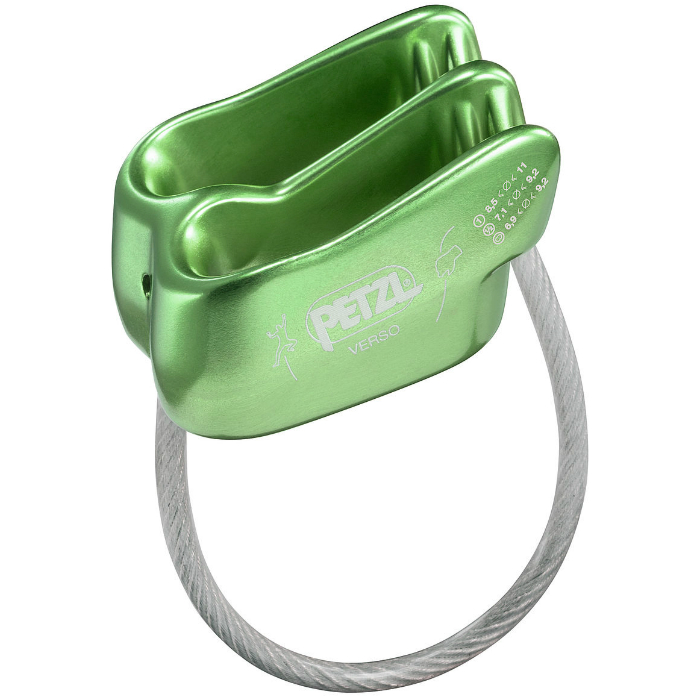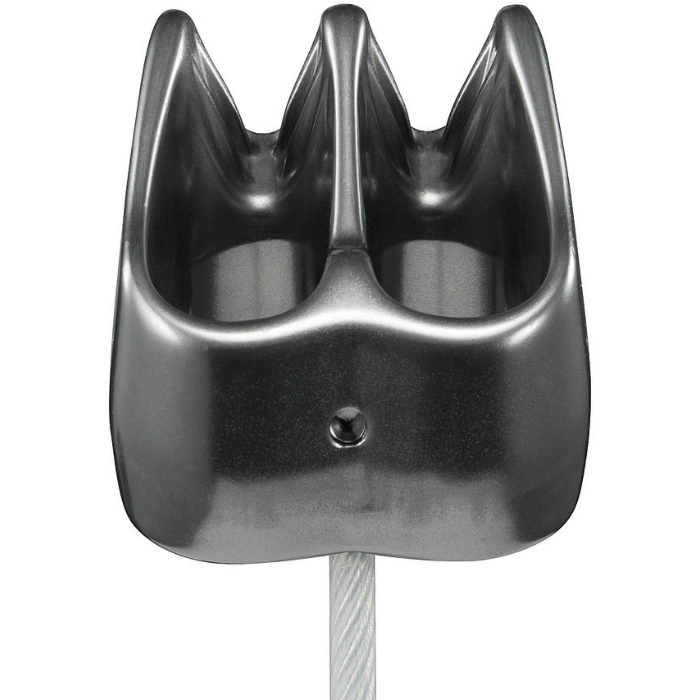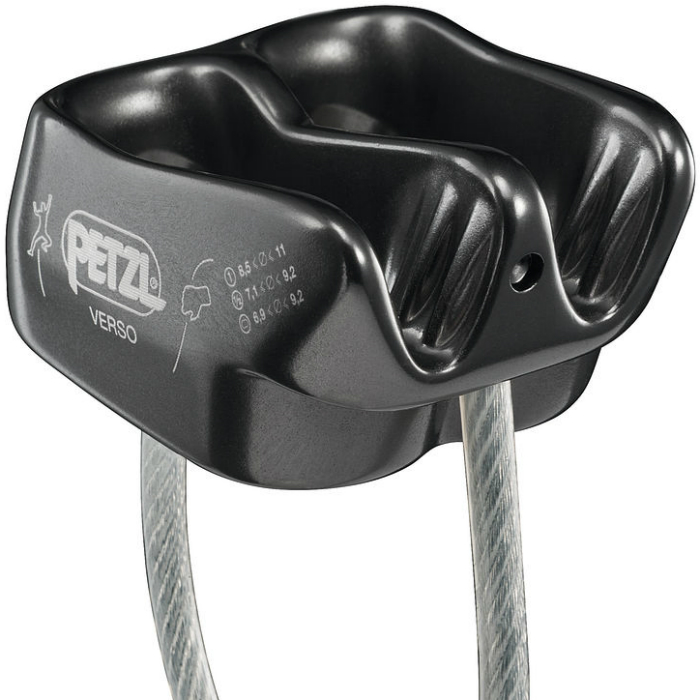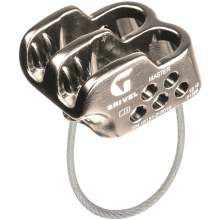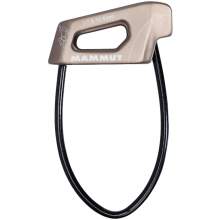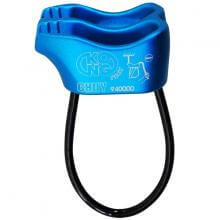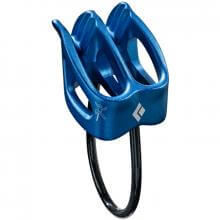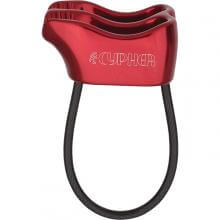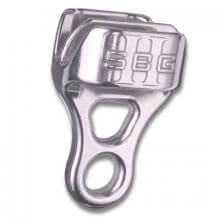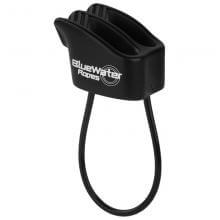Verso
Description
Lightweight belay/rappel device for a broad range of single, half and twin ropes.
VERSO is Petzl's lightest belay device. It accommodates most rope diameters: single ropes 8.5 to 11 mm, half ropes 7.1 to 9.2 mm and twin ropes 6.9 to 9.2 mm. It is intuitive and easy to use in the gym or at the crag; well suited for learning how to belay. The specific design of the rope slots allows the rope to glide smoothly and reduces wear.
Description
- Adapted to a broad range of rope diameters:
- V-shaped friction grooves enable controlled braking - Easy to use:
- classic belay technique with both hands on the rope
- ropes glide smoothly through the device
- can be used for rappels
- rope installation diagrams for belaying and rappelling engraved on the device - Durable and lightweight:
- the rounded design of the rope slots limits wear and extends the life of the device
Lightweight belay/rappel device for a broad range of single, half and twin ropes.
VERSO is Petzl's lightest belay device. It accommodates most rope diameters: single ropes 8.5 to 11 mm, half ropes 7.1 to 9.2 mm and twin ropes 6.9 to 9.2 mm. It is intuitive and easy to use in the gym or at the crag; well suited for learning how to belay. The specific design of the rope slots allows the rope to glide smoothly and reduces wear.
Description
- Adapted to a...
Retail price
When you click a link below and then checkout online, no matter what you buy (climbing gear or not), we get a small commission that helps us keep this site up-to-date. Thanks!
Device Type  |
Tube |
Weight (g)  |
55 g |
Belay Brake Assist  |
No |
| Rope Options | 1 or 2 ropes |
Guide Mode  |
No guide mode |
Teeth  |
Yes |
Rope Range (mm)  | 6.9 mm
- 11.0 mm
single: 8.5 - 11.0 half: 7.1 - 9.2 twin: 6.9 - 9.2 |
Certification  |
EN, UIAA |
Pretty Good
by CampingSam on 02/6/2019Overall the Petzl Verso fulfills its role as a basic tube-style belay device. These designs are great for new or experienced climbers that appreciate simplicity and a good deal. When compared with its direct competition in this class though, we noticed a few small drawbacks in lock-off strength and durability. Nevertheless, the Verso is a capable belay device and well worth your consideration.
A checklist to monitor your belay device, it helps you to know when to retire your belay device.
Describes with words and helpful photos, how to protect your belay device and other metal equipment.
Helpful insruction for how to inspect Verso belay device.
This instruction explain how to correctly use VERSO. Only certain techniques and
uses are described.


